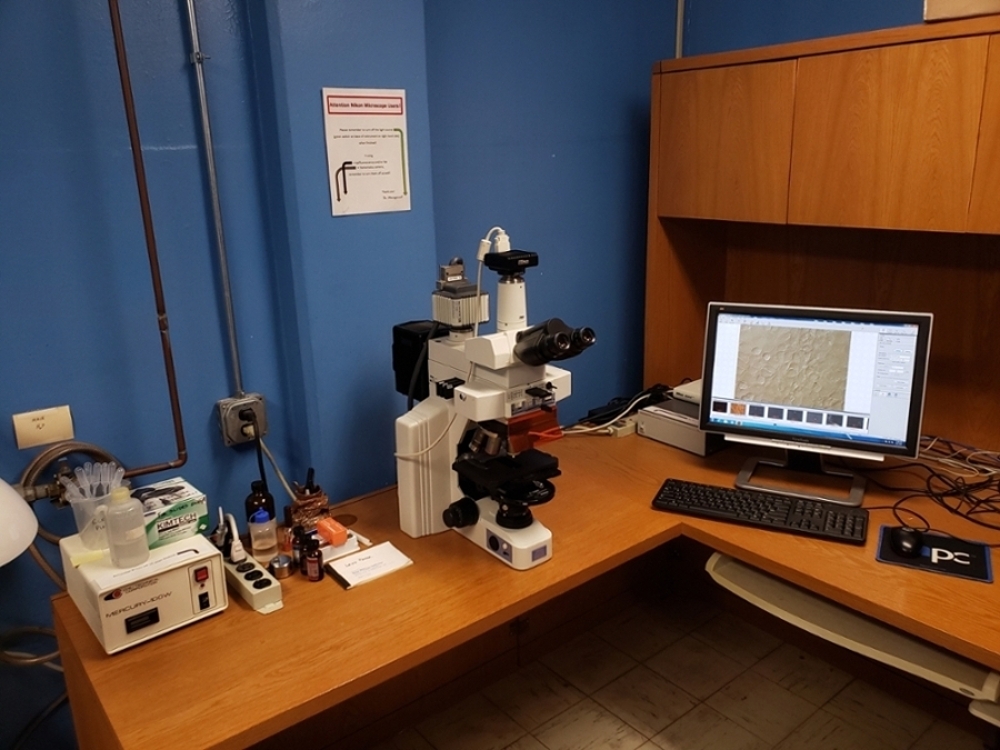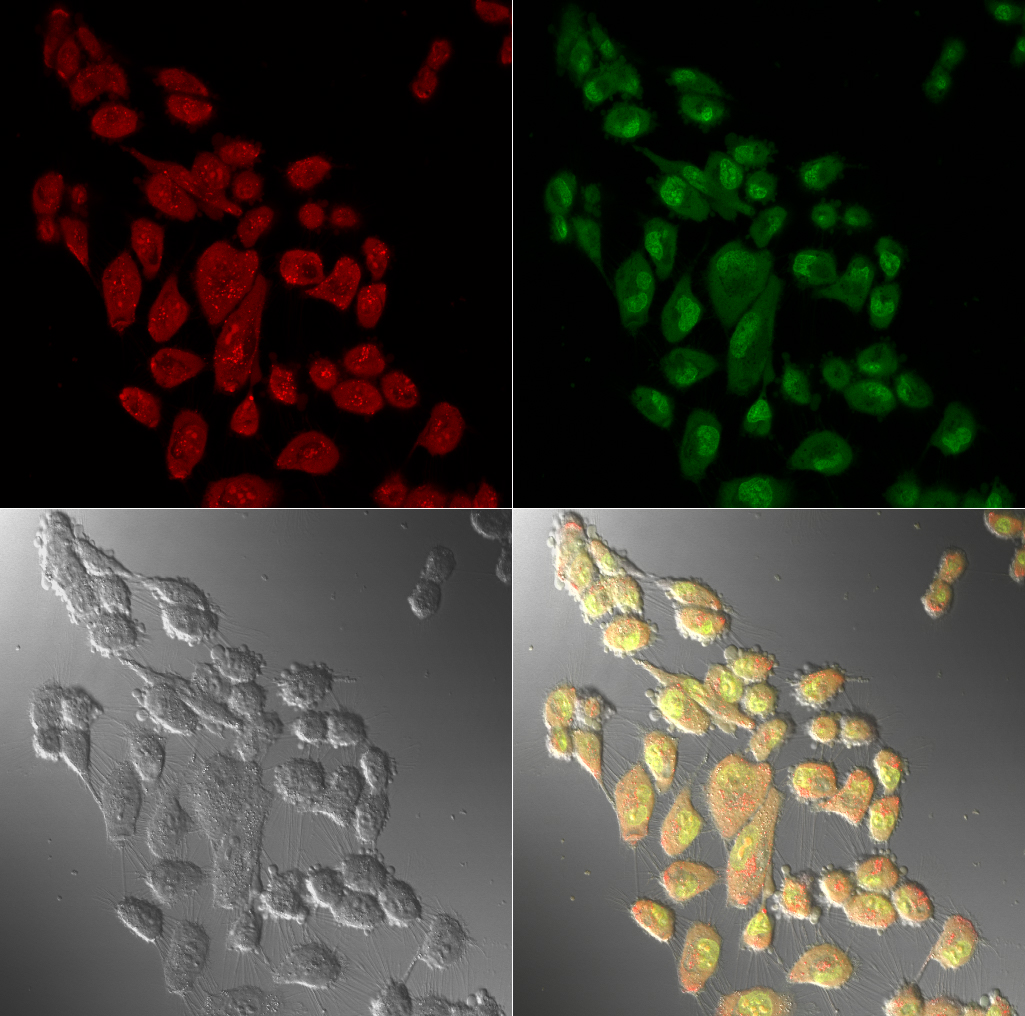- Department of Biological Sciences
- Campus Experiences
- Facilities
- Research Instrumentation and Microscopy Core Laboratories
- Microscopy
Microscopy
Our Nikon Eclipse E-600 LM is outfitted with standard brightfield visualization, epifluorescence filter sets (UV-2B (ex 353, em 435), UV-2E/C (a.k.a. DAPI - ex 358, em 461), BFP (ex 380, em 440), GFP (ex 470, em 525), YFP (ex 500, em 535), TRITC HYQ (ex 545, em 620)), differential interference contrast (DIC, a.k.a. Nomarski optics), phase contrast, 1X, 4X, 10X, 40x, and 100x (oil) Plan Fluor, and 60X Plan Apo objectives, and two imaging systems: Nikon DS-Fi1c color digital camera system with Nikon NIS-Elements image capture and optimization software and Hamamatsu ORCA-ER high-sensitivity monochrome digital CCD camera with HCImage Live image capture and optimization software.
Our Leica MZ7.5 stereo microscope is outfitted with a Leica MC170 HD color digital camera, Leica Application Suite image capture and optimization software and a newly added LAS MultiTime – Timelapse capture mode that can facilitate video capture (.avi files).
This is the older model of confocal microscope in our facilities and it is outfitted with 10X, 40X (oil), and 63X (oil) Plan Neofluar objectives, argon (458, 488, and 514 nm) and HeNe (543 nm) lasers, and Zeiss Pascal LSM 5 image acquisition and optimization software.
Please note: Dr. Linda Yasui is solely responsible for the management of the new Zeiss LSM 900 Confocal Laser Scanning Microscope with Airyscan 2. Please contact lyasui@niu.edu for any questions about operations, specifications or scheduling time on this microscope.
- Nikon's Microscopy U website
- Additional equipment for transmission electron microscopy
- Reichert-Jung SuperNova Ultramicrotome
- Reichert OmU2 Ultramicrotome
- Sorvall Porter-Blum MT2-B Ultramicrotomes (2)
- LKB Glass Knifemaker
- Additional equipment for light microscopy
- AO T/P 8000 Automated Tissue Processor with Tissue-Tek II Paraffin Dispenser
- AO Spencer 820 Microtomes (3)
- Lab-Line Slide Warmer
- Lab-Line and Tissue-Tek tissue flotation baths
- AO Knife Sharpener
Contact Us
Barrie Bode, Ph.D.
Core Lab Director
COVID-19 Waste Water Surveillance
Professor, Biological Sciences
bodebp@niu.edu







